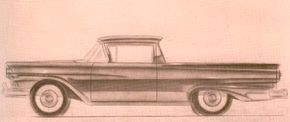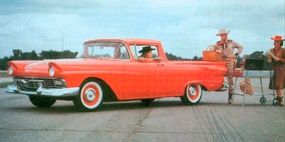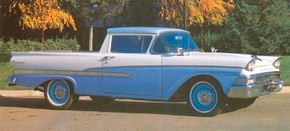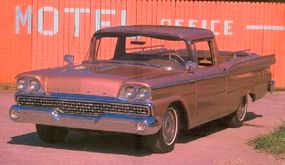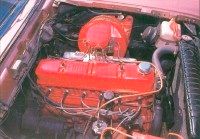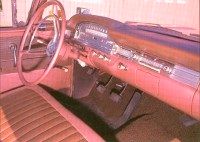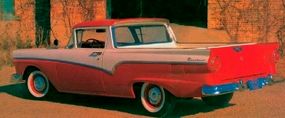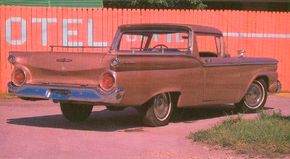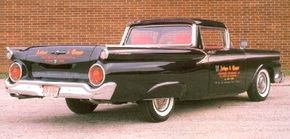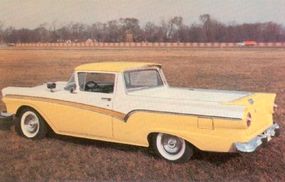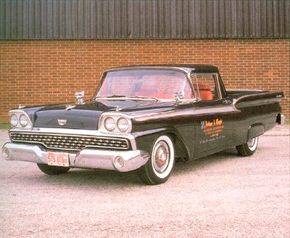During the 1950s, exotic new body styles were the order of the day at Ford. Among them was the Ranchero, a novel car-pickup that was inspired at least in part by Ford's Australian "Ute."
It was neither the best of times nor the worst. Just the most trivial. Eddie Fisher still crooned. Young men mooned over Kim Novak, and Elvis Presley had the world "All Shook Up." One of the many films imbued with the boy-loves-girl, song-and-dance mood of the times was April Love, starring clean-cut Pat Boone and wholesome Shirley Jones-not to mention a nifty 1957 Ford Ranchero Custom. The movie and its songs are long forgotten, but the 1957-59 Rancheros remain among the best of Fifties collectibles, right up there with boomerang designs, far-out pink and turquoise furniture, and Philco Predicta TV sets. Unlike the Ranchero's companion new Ford body style, the 1957-1959 retractable hardtop-convertible Skyliner, the Ranchero's influence was more far reaching -- both Ford and Chevrolet sedan-pickups were built for another 20 years or more. High-style pickups remain trendy to this day.
Advertisement
In essence, the Ranchero was a two-door Ford Ranch Wagon with the rear section of the roof cut off and a bed liner slipped in over the floor pan. It was at least partly a replay of the old Hudson sedan-pickup -- or 1937-1939 Studebaker Coupe-Express -- an idea which dated back to the 1934 Terraplane, and probably had its beginnings in the earlier farm/ranch tradition of simply sawing off the back section of the roof of the old family Buick or Ford. Even further back, some "horseless carriages" had removable rear tonneaus (or none at all), leaving room in the rear area for small pickup boxes-many early Fords and other makes were so fitted by owners.
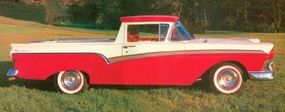
The roots of the 1957 Ranchero, however, actually go "Down Under" to the land of eucalyptus trees, koala bears, and kangaroos. Ford of Australia, it could be argued, introduced the first true Ranchero in 1932 -- the Utility. Sheep ranchers, meanwhile, affectionately shortened the name to "Ute." This was a roadster with the body section behind the driver replaced by a fleetside bed, which was flush with the doors and an integral part of the body.
It used separate rear fenders, which weren't eliminated until 1949, as on the passenger cars. Despite the Great Depression, the Ute caught on so fast in the Australian outback that in 1933 a coupe version was added. This model sported small, squat rear-quarter windows that remained a Ute trademark through 1958. From 1932 to 1934 the spare tire was carried in the left front fenderwell, and from 1935-1939 it rode just below the left rear-quarter window, in front of the rear fender. Beginning in 1940, the spare was moved inside behind the front seat.
The roadster was dropped after 1938, though the coupe soldiered on for another 20 years. After that, Utes became American-designed Rancheros with the unique small rear-quarter windows removed. Old Utes are fairly rare in Australia -- most were worked to death -- and are almost non-existent in the U.S. What's so amazing is that Ford never marketed the concept in this country prior to 1957.
For more information on the 1957-1959 Ford Ranchero, continue on to the next page.
For more information on cars, see:
- Classic Cars
- Muscle Cars
- Sports Cars
- Consumer Guide New Car Search
- Consumer Guide Used Car Search
Advertisement
